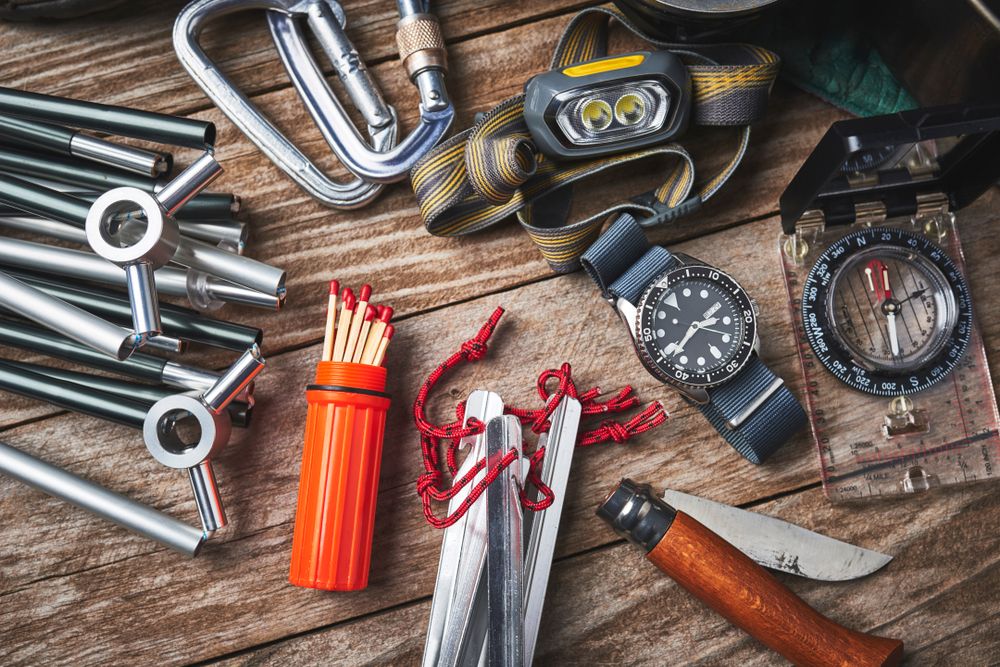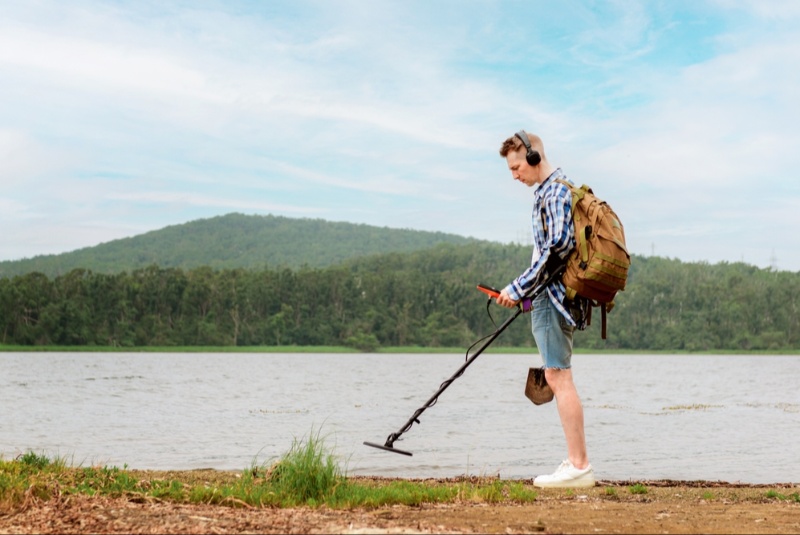For many outdoor enthusiasts, wilderness survival kits start with the usual: a first-aid pack, matches or lighter, a pocketknife. Yet, while these essentials remain vital for short hikes or day trips, truly venturing into more extreme or remote terrain demands more than just the basics. In such environments, you may face potential hazards like sudden weather shifts, sparse rescue options, or limited means of communication. Crafting an advanced wilderness survival kit can be the difference between a minor mishap and a life-threatening ordeal. This in-depth guide explores why you need advanced gear, key items to include, and tips for tailoring your pack to specific climates and challenges—ensuring you’re prepared for the unexpected when you step off the beaten path.
1. Why an Advanced Survival Kit Matters
Why It’s Important
When you’re venturing well beyond typical campsites or day-hike loops, standard “ten essentials” (like a map, compass, flashlight, etc.) might fall short in the event of major mishaps—like severe injuries, multi-day storms, or total isolation from roads. An advanced survival kit addresses potential longer durations off-grid, harsher conditions, and more specialized tasks, such as building emergency shelters or purifying water from questionable sources.
Situations Where It’s Crucial
- Backcountry or Off-Trail Exploration: No trails, limited signage, or zero immediate human presence.
- Alpine or Winter Expeditions: Cold exposure can escalate threats quickly. Tools for warmth, avalanche preparedness, or snow-based signals might be needed.
- Desert or Tropical Environments: Extreme heat or humidity demands advanced solutions for water sourcing, sun protection, and insect threats.
- Extended Solo Trips: With no companion to share gear or help in emergencies, your kit must cover more contingencies.
Takeaway
While you could survive a short day-hike misadventure with simpler gear, advanced undertakings carry increased risk. Designing a robust survival kit ensures you have both essential tools and specialized items for coping with extended or more dangerous scenarios.
2. Foundation: Reviewing the Basic Essentials
Why It Matters
Before diving into specialized additions, let’s ensure you have the core gear that’s universally recommended. These basics remain the bedrock of any survival pack, no matter how advanced.
Core Items
- Navigation: A topographic map, compass, or GPS device. For advanced trips, you might add altimeters or offline digital maps on a rugged phone or GPS watch.
- Hydration and Water Purification: Spare water bottle/hydration bladder plus portable filter or purification tablets. Even advanced kit should include a backup method.
- Shelter: A lightweight emergency bivvy or space blanket. In advanced kits, you might upgrade to a durable tarp for more robust shelter building.
- Fire Starters: Waterproof matches, lighter, or ferro rod. Fire can be essential for warmth, cooking, and signaling.
- Lighting: A reliable headlamp with extra batteries. Possibly add a small backup flashlight or a battery bank for rechargeable headlamps.
- First-Aid: Basic supplies (bandages, antiseptic, pain relievers, etc.). For advanced kits, consider SAM splint, trauma gauze, or a tourniquet if traveling in remote, high-risk terrain.
- Knife or Multi-Tool: Vital for cutting rope, preparing kindling, and general repairs. For advanced usage, a multi-tool with pliers, wire cutters, and an awl can expand your capabilities.
Takeaway
If you don’t have these fundamentals covered, bigger advanced items won’t compensate. Ensure they’re present and in good working order before layering on specialized gear.
3. Specialized Gear for Advanced Situations
Why It Matters
Venturing deeply into wilderness—far from quick rescue—calls for specific equipment that helps address longer survival windows, more extreme environments, or advanced bushcraft tasks. Let’s look at some gear that goes beyond the usual first-aid kit and standard knife.
Key Upgrades
- Heavy-Duty Survival Knife or Hatchet: For tasks like chopping wood, constructing makeshift shelters, or processing larger game, a robust blade or compact hatchet can be invaluable.
- Saw or Wire Saw: Helpful in dense forests for cutting branches to build a more secure shelter, especially in extended stay scenarios.
- Emergency Signaling Tools: Beyond a simple whistle, consider a signal mirror or mini flares. For extremely remote travel, a personal locator beacon (PLB) or satellite messenger can be lifesaving.
- Long-Term Water Solutions: A durable pump filter, UV purifier (like a Steripen), or advanced gravity filter for extended stays where you’ll be sourcing water multiple days.
- Lightweight Stoves or Fireproof Cooking Kits: If you’re out for multiple days, a compact stove (like a pocket rocket or alcohol stove) ensures you can reliably boil water or cook if you run out of flame-friendly tinder.
- Extra Cordage: High-strength paracord for advanced shelter building, gear fixes, or improvised splinting.
- Fishing or Trapping Supplies: In true wilderness scenarios lasting more than a few days, a small fishing kit or snare wire might be part of advanced bushcraft for emergency food acquisition.
- Insulated or Subzero Gear: In cold climates, think about a heavier-duty bivvy or a double-layer sleeping pad, ensuring you retain heat if stranded overnight.
Takeaway
With advanced kit pieces, you can stay afloat longer in unplanned survival situations—building more robust shelters, procuring water, or even obtaining food if you’re truly stuck beyond your intended timeline.

4. Tailoring the Kit to Environment and Season
Why It Matters
A “universal” advanced kit is a good start, but conditions vary drastically between a scorching desert, a tropical jungle, or a snowy mountain pass. Adapt your gear to specific climates and weather extremes you expect.
Environmental Tweaks
- Desert: Emphasize water capacity (extra collapsible containers, high SPF sunblock, a wide-brim hat, electrolyte powders), UV-protective clothing.
- Arctic/Subarctic: Heavy insulation layers, chemical hand/foot warmers, possible avalanche gear, additional fuel for melting snow.
- Tropical/Rainforest: Focus on moisture management, insect repellent, quick-dry clothing, robust waterproofing for electronics. Possibly a hammock vs. ground-based shelter to avoid sodden soil or critters.
- High Altitude: Add oxygen canisters or portable pulse oximeters for severe altitude climbs. Strong windproof shelter materials, gaiters for snow or scree.
Seasonal Adjustments
- Winter: More layering for body warmth, stoves that function reliably in freezing temps, potential traction devices or collapsible shovel for snow travel.
- Monsoon/Rainy: Prioritize waterproof sacks, extra tarp coverage, water-resistant gloves, spare socks to prevent trench foot.
- Shoulder Seasons: Expect changeable conditions; ensure layering options, from mild daytime to chilly nights.
Takeaway
Flexibility is key. Start with your base advanced kit, then add or swap out certain gear based on the location’s seasonal climate. This approach ensures efficiency without unnecessary bulk.
5. Organizing and Maintaining Your Kit
Why It Matters
A** well-packed and well-maintained** kit ensures you can find crucial items quickly in an emergency, and that each component remains functional. A jumbled bag is just as problematic as lacking key supplies.
Packing Strategies
- Modular Approach: Group items by function—medical gear in one pouch, fire-starting in another, etc. This organizes them and speeds retrieval.
- Waterproof or Weather-Resistant Bags: Use dry sacks or zippered pouches, especially for electronics, documents, or tinder-based gear.
- Labeling: Mark pouches or use color-coded sacks for different categories.
- Frequent Inventory: Inspect expiry dates on medication and batteries, check for any damage or corrosion on gear, and replace used or compromised items.
Takeaway
In an emergency, rummaging through a disorganized bag wastes precious time. A tidy, structured approach means every second can be used effectively, increasing your odds of successful self-rescue or prompt problem-solving.
6. Skills and Knowledge: The Human Factor
Why It Matters
No matter how advanced your kit, gear alone cannot guarantee survival. Knowing how to use each item safely and effectively, as well as having basic survival knowledge—like fire-building, navigation, first-aid, shelter construction—can make or break your success.
Skill-Building Tips
- Practice Drills: Attempt setting up your emergency shelter in the backyard. Try filtering water from a local creek. Familiarize yourself with those procedures before you’re in a stressful crisis.
- Take a Wilderness First-Aid Course: This teaches you how to handle injuries with limited resources, such as splinting a broken limb or controlling severe bleeding.
- Learn Basic Bushcraft: Building a lean-to from branches or crafting a rudimentary snare can be relevant if you’re lost for multiple days.
- GPS/Compass Proficiency: Don’t rely solely on your phone’s GPS. Practice navigating with a map and compass in simpler, known areas first.
Takeaway
Your gear is only as effective as your ability to deploy it calmly under duress. Skills can compensate for limited resources, while an unskilled user might flounder despite top-tier equipment.
7. Reassessing Your Kit Post-Trip
Why It Matters
Every wilderness journey offers lessons—maybe you never used a certain item, or you sorely missed something. Conducting a post-trip review ensures your kit evolves to better meet real needs.
Post-Trip Steps
- Check Condition: Clean, dry, and restock used items (like bandages, water purifiers, or matches).
- Reflect on Utility: If an item sat untouched for multiple trips, decide if it’s truly necessary or if it can be replaced with a lighter, multifunction alternative.
- Update Based on Observations: Did you find yourself longing for an item not included? Did you struggle with the weight of certain gear? Tweak your kit accordingly.
Takeaway
Continual refinement—driven by real-world experiences—keeps your kit relevant and as streamlined as possible. This ongoing process is the essence of advanced readiness.
Constructing an advanced wilderness survival kit means going beyond basic first-aid and a pocketknife—especially if you’re venturing into remote, challenging environments. By layering specialized gear (like a robust water filtration system, heavy-duty knife or hatchet, comprehensive first-aid items, and advanced signaling tools) onto your existing foundation, you equip yourself to handle multi-day emergencies or more extreme climates. But even the most thorough kit can’t replace the skills needed to use those tools effectively—knowing how to purify water, navigate off-trail, or build a rudimentary shelter remains paramount.
Furthermore, your kit isn’t static; as you explore different biomes (desert, arctic, tropical) or shift from short weekend treks to multi-day expeditions, adapt your gear. Rotating items based on weather predictions or regional hazards keeps your load efficient yet robust. Finally, remember to stay organized: separate gear into labeled pouches, maintain an up-to-date inventory, and replace or replenish used or expired products quickly.
That final principle—preparation—is what advanced wilderness survival is all about. It’s not about carrying every conceivable item but balancing thoroughness with weight concerns and real usage. With a well-considered kit and sharpened survival skills, you’ll confidently trek deeper off-grid, comforted by the knowledge that if anything goes awry, you and your gear are ready to respond. Enjoy the wilder side of nature, armed with the self-reliance that a carefully crafted advanced kit can provide. Safe adventuring!




